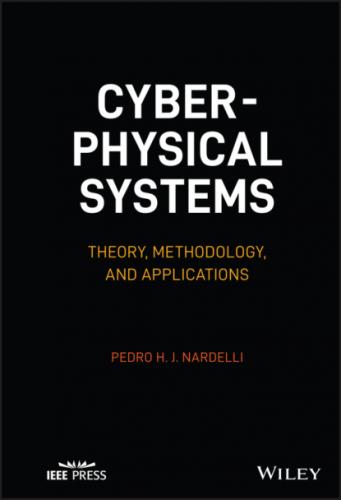8 Chapter 8Figure 8.1 Typical block diagram of (negative) feedback control.Figure 8.2 Example of a continuous‐time signal
9 Chapter 9Figure 9.1 Illustration of a small‐scale data network.Figure 9.2 Travel from Helsinki to São Paulo via Paris following a layered a...Figure 9.3 Seven layers of the OSI model.Figure 9.4 OSI reference model and the Internet protocol stack.Figure 9.5 Encapsulation of a generic data transfer over the Internet.Figure 9.6 Current five generations of cellular systems in 2021.Figure 9.7 5G applications and their requirements in terms of rate, reliabil...Figure 9.8 Cloud vs. edge computing.Figure 9.9 Predicting the electricity demand from air temperature based on l...Figure 9.10 ML methods classified as a combination of data, model, and loss ...Figure 9.11 Federated learning.Figure 9.12 Distributed ledger technology. Source: Adapted from [19].Figure 9.13 Proposed stages of the Quantum Internet development.Figure 9.14 Performance gains after Moore's law.Figure 9.15 Throughput (from 0 to 1) as a function of traffic (expected pack...
10 Chapter 10Figure 10.1 Illustration of the three layers of CPSs and their physical depl...Figure 10.2 Process flow diagram of the TEP.Figure 10.3 Proposed communication and storage architecture for fault detect...Figure 10.4 Fault detection in the TEP considering Fault 5 in Table 10.2. Th...Figure 10.5 Illustration of a power grid.Figure 10.6 Direct current circuit representing the physical layer of the sy...Figure 10.7 Self‐developing system dynamics considering an external perturba...Figure 10.8 Cyber‐physical public health surveillance system.Figure 10.9 Illustrative example of undesirable consequences of navigation a...Figure 10.10 Process monitoring loop.Figure 10.11 Energy data acquisition in an industrial process.
11 Chapter 11Figure 11.1 Illustration of three different packetized electricity demand pr...Figure 11.2 Number of publications in the Scopus database containing the ter...Figure 11.3 Boyd's OODA loop.Figure 11.4 Example of Beer's VSM.
12 Chapter 12Figure 12.1 From the first to the fourth industrial revolution.
List of Tables
1 Chapter 5Table 5.1 Summary of possible characteristics of a network
2 Chapter 8Table 8.1 Update rule for the elementary CA.
3 Chapter 10Table 10.1 Guiding questions to study and/or design CPSs.Table 10.2 Faults in the TEP.Table 10.3 Guiding questions for the TEP as a CPS as presented in [10].Table 10.4 Smart fridge design in a cyber‐physical energy system.Table 10.5 Guiding questions related to Figure 10.11.
Pages
1 ii
2 iii
3 iv
4 xi
5 xii
6 1
7
